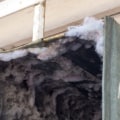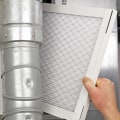Reusable filters are not the most efficient when it comes to air filtration, with an average MERV rating between 1 and 4.They are effective in removing the most important pollutants from the air, such as dust, dust mites, lint particles and dust. Many people have had these washable filters for more than a decade. The only reason you would need to replace it is if you find a better one or if you decide to do so. Of course, normal wear and tear will take its toll on anything. Most washable filters last at least ten years, so you should be fine if you plan ahead and take good care of the washable filter when you clean it.
Most washable electrostatic furnace filters come with a lifetime warranty against defects. Disposable filters, on the other hand, are more effective at trapping smaller particles. Washables are only good at protecting from large particles such as dust. They don't filter pet dander, bacteria, viruses, or smoke, especially when they're not changed often enough. They are a greener option than disposable filters.
The cost savings you get from using washable HVAC filters still adds up to big savings. Filter manufacturers rate the effectiveness of air filters using a scale called the MERV rating table, which represents the minimum efficiency report value. The cheapest disposable air filters are between one and four on this scale. However, microparticle air filters are known to exceed 14 in their MERV classification. Unfortunately, reusable air filters don't work better than low-quality products, since they measure less than four on the MERV scale.
Some experts believe that makes them ineffective, especially for homes where air quality is a concern. It is important to install the reusable furnace filter with the arrow on the filter in the direction of the air flow, just as you would with a disposable filter. While a conventional HEPA-quality air filter aims to help with air pollutants, such as smoke, pet dander, or hairspray, don't count on a reusable filter that does much for them. It can be difficult for homeowners to decide which furnace filter option is best for their needs and budget. In general, the decision to switch to a reusable filter depends on what you need for air quality. If you buy a MERV that is too high, it can even damage your furnace because it will cause a pressure drop.
The air filter is designed to protect both the mechanical components of the furnace and the quality of your home's indoor air from particles suspended in the air. The payback time for reusable filters is relatively short, so you should get back the money you invested in less than a year. The general consensus at Star Heating and Cooling is that there are more negative aspects to using washable furnace filters than there are benefits. It's important to ensure that your HVAC system can meet the MERV rating of your new washable furnace filter. Disposable air filters are definitely cheaper upon purchase, while washable furnace filters are a bit more expensive. You can also contact customer service or your local HVAC contractor and they will help you determine what filter size you should order for your specific furnace. To maintain good indoor air quality and prevent the furnace from overheating, you should plan to replace the furnace filter as often as once a month.
One type of furnace air filter that some people may not be familiar with is the electrostatic filter, also known as a washable furnace filter. And like disposable filters, most of these reusable furnace filters have an electrostatic design, meaning they capture dust and particles using static electricity. If you're tired of buying new filters so often, the concept of a washable furnace filter might sound appealing. But before making any decisions about which type of oven filter is best for your home or business, it's important to consider all factors involved in order to make an informed decision.


